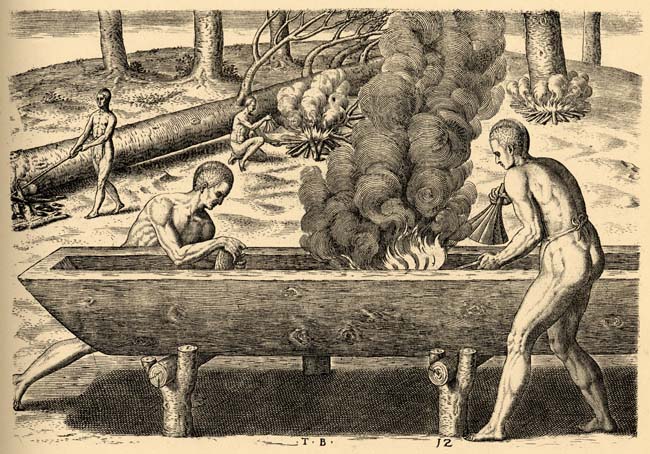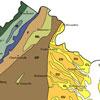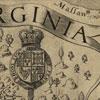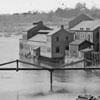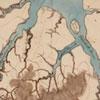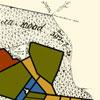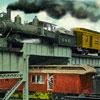While the first English settlers looked upon the Virginia landscape as an untamed wilderness full of potential mineral wealth, the Virginia Indians who had lived there for hundreds of years saw something very different. To them, the land was no more wild and untamed than London or the English countryside. For hundreds of years before the arrival of Europeans, Virginia Indians carefully managed their environment using sophisticated knowledge and techniques. Virginia Indians did not have plows, draft animals, or iron tools, and instead used slash-and-burn, or swidden, agriculture. Rather than metal axes, Virginia Indians felled trees by cutting away the bark at the base of the tree to kill it, and then building a small fire around it. Cleared fields were then burned to prepare them for planting, and, after the soil was exhausted, a family would move on to another section of forest to start again.
Virginia Indians used controlled fire and stone tools in a variety of ways, one of which is illustrated in this image by European engraver Theodore de Bry. The primary mode of transportation for Virginia Indians was by foot, but dugout canoes were indispensable for fishing, longer-distance travel, and in war. Canoes took about 10 to 12 days to build, and were formed by carefully burning out the inside of a felled tree and scraping away the remaining wood. Theodore de Bry never traveled to the Americas, and his artistic style reflects his own perspective as much as it does the sketches and descriptions he based his work on, but additional sources corroborate this canoe-building technique.
The environment played a central role in the lives of both Virginia Indians and European settlers, all of whom depended on it for sustenance.
Source: Theodore de Bry, “The Manner of Makinge Their Boates,” Copperplate engraving, in A Briefe and True Report of the New Found Land of Virginia, by Thomas Hariot, Electronic version (Original, 1590; English translation, 1871), (Chapel Hill: Documenting the American South. University Library, The University of North Carolina at Chapel Hill, 2003), 50, accessed September 17, 2011.


